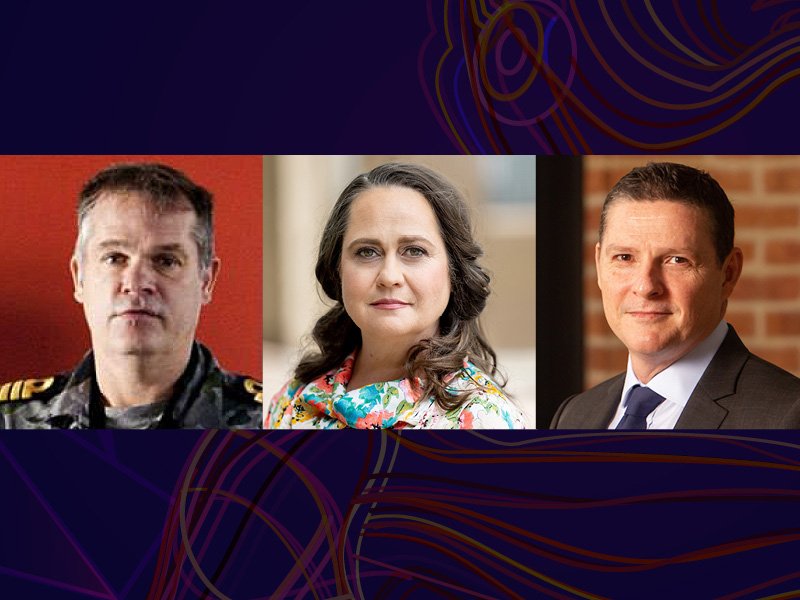Government may have all the intention in the world to adopt more modern approaches, embracing new technologies and diversity of mindset and background in their workforces, but until it can address organisational inertia, it will be impossible to achieve the best outcomes, says former chief of staff at Australia’s Navy Strategic Command Commodore Jonathan Sadleir AM.
Speaking on the final episode of the Counterpoint Conversations podcast series, Mr Sadleir, who is currently chief strategy officer at defence contractor CEA Technologies, said that hiring practices alone will only get organisations so far.
“We can be the most advanced organisation on the planet, and we can stack our company with as many young STEM focused people as possible, with great ideas,” he said.
“But fundamentally what we need to be addressing is the ‘older guard’ that doesn’t understand how it’s going to be implemented.”

Mr Sadleir said that Defence and other government departments have a fixed mindset that desires the provision of specific, pigeon-holed outcomes. This is a big problem when considering technologies and methods of work that require a growth mindset and some level of comfort with ‘aspirational’ projects and risk-taking.
Mr Sadleir has seen some willingness across Defence management, but “it does come up against a lot of bureaucratic inertia.
“It’s very difficult to characterise an acquisition that you don’t actually have in your hands yet, that doesn’t exist, that’s aspirational, that needs to be developed,” he said.
Verizon’s Asia Pacific vice-president Rob Le Busque said that from his perspective, globalisation of markets was the real driver for diversity in hiring practices. It’s no longer about virtue signaling or “doing the right thing” – diversity is important to future-proof any organisation.
Mr Le Busque observed that the demand for “frictionless global trade” had increased competition for talent, and organisations were already responding to those demands with more flexible work arrangements. Then the pandemic happened and kicked this trend into a whole other gear.
“The focus shifted very much to the meta-trend of being connected all the time,” he said. “I’ve said before that the pandemic was really a dress-rehearsal for the next 10 years, from a technology perspective.”
The shift and rapid drive towards automation places a lot of emphasis on diversity of thinking.
“We need different skill sets and different orientations, and to combat things like … groupthink and unconscious bias,” continued Mr Le Busque, who added that this old mindset is no longer relevant in the rapidly changing world we live in.
There is a danger of bias in the code. For this reason, diversity is crucial right now. Technicians and designers must be hyper-aware of these factors in the testing phase – including how bias might express itself – and remain constantly and diligently on the lookout.
On the flip side, according to Mr Le Busque, the automation of many sectors that once relied solely on brute strength is enabling more diverse hiring of roles traditionally dominated by men.
“These technologies give organisations the opportunity to use their human capital and deploy their employee base very differently to the way they would have in the past – in a very agile and inclusive manner.
“Reaping all the benefits of diversity of thinking, diversity of input, and problem-solving.”
At the same time, we need to ring a warning bell about testing our software to make sure it is achieving its intended goals without bias.
Mr Sadleir believes we should look less at how our allies are working and more at those less culturally similar to us to determine what they are doing that works and does not work. Understanding and seeking input from as many diverse voices as possible are crucial in strategic planning.
In the absence of certainty of outcomes when dealing with agile new technologies and a growth mindset, diversity of opinion and input at the planning stage is actually an organisation’s best insurance to mitigate risk.
The Counterpoint Conversations podcast series was produced as a partnership between Verizon Business Group and InnovationAus.com.
Do you know more? Contact James Riley via Email.

So, off to the car dealership you go. “I’d like a new Model X”, you say. The salesman replies “not so fast bud.” You don’t need to have “a fixed mindset that desires the provision of specific, pigeon-holed outcomes”. You could get our new Model A for Agile. It’s great. Every outcome is a surprise. We might give you an innovative 3-wheeler. You could be surprised by a 1-seater with tray back. One customer was impressed by his new electric car without a battery (that comes in the next sprint). I’m telling you dude, you don’t need a fixed mindset around here. We can do everything. Put you down for a Model A for Agile? You’ll love the outcome, just can’t say what it will be at the moment. But for sure it will cost more than you thought, take longer than you wanted, never be completely finished and be full of bugs. Hey, there wasn’t time to test the thing before the release date.